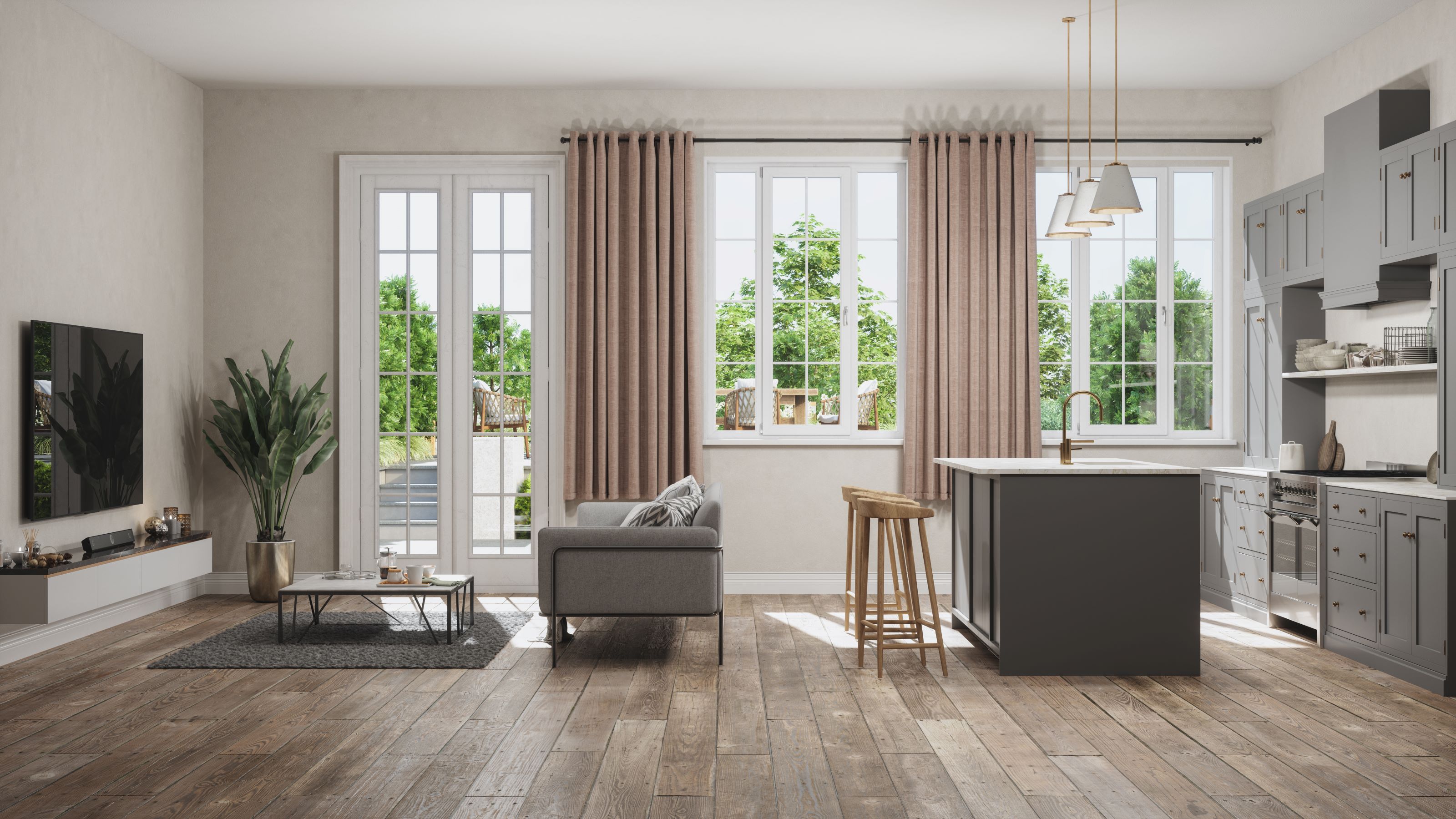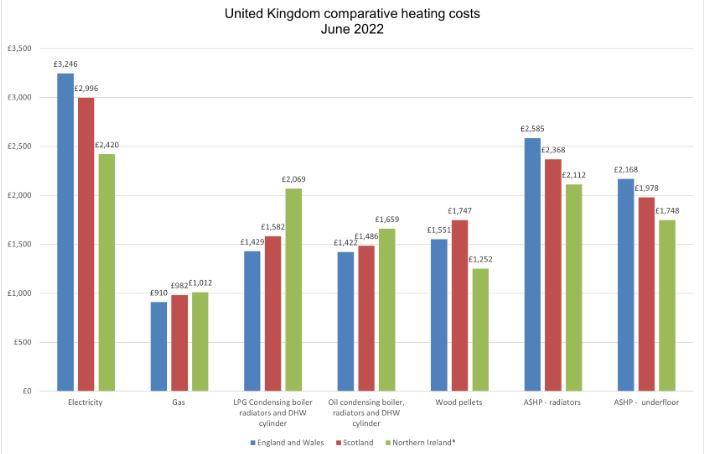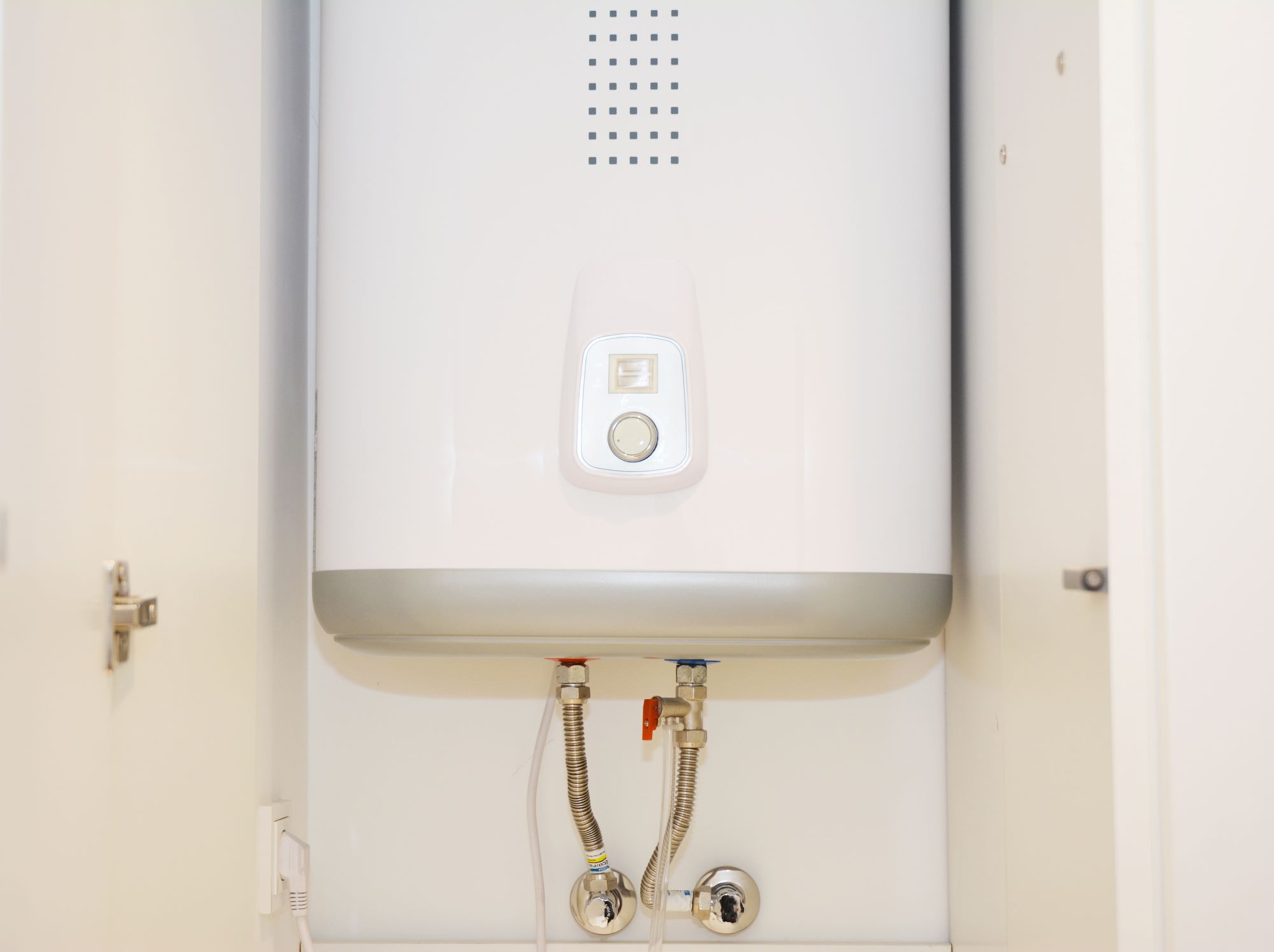What is the cheapest way to heat a room this winter?
From central heating run by gas boilers or heat pumps to room-only solutions like your trusty oil-filled radiator, which comes out on top? We asked a heating expert

With the cost of energy soaring we’re all looking for the cheapest way to heat a room. And with government figures suggesting that over 42 per cent of us now have smart meters, most of us can watch in real time exactly how fast our money is being spent.
There are several reasons for record energy prices. It’s partly the recovery from the pandemic, which raised demand higher than supplies could follow, not to mention energy-producing Russia’s war on Ukraine. The result is that the average unit price from October for customers on standard variable tariffs is 34p per kilowatt hour (kWh) for electricity and 10.3p kWh for gas. Conserving energy and energy saving tips have never felt so important.
We spoke to heating expert Rob Bohm, from heating consultants CLPM, to pull together this comprehensive guide on the cheapest way to heat a room.
What type of heating system is the cheapest?
Gas central heating is the cheapest type of heater to run, most householders will be pleased to hear given this is the most common heating fuel across the UK. "For most, gas will still be the cheaper way of heating," agrees Rob Bohm.
Looking at the annual average cost of a range of heating options – taken from a typical three-bedroomed, semi-detached home, using approximately 16,000 kWh – gas costs an annual average of £910 for households, according to data from Oftec.
This is by far the cheapest heating option compared to others, although it is worth noting that this data was compiled earlier this year so energy prices have likely increased since then.
Electricity meanwhile is far more expensive, costing households an annual average of £3,246, a heat pump with underfloor heating comes in at £2,168, an oil boiler at £1,422, and a heat pump with radiators £2,585.
When applying these guides to your own home, there are three factors, as identified by Oftec, that affect how expensive your heating system might be to run:
- Unit cost of the fuel your home uses
- How efficient your heating system is to run
- Heating requirements of your house and occupants (biggest variable)

With 78 per cent of UK housing stock having gas central heating according to Statistica – covering an estimated 23 million homes – the gas boiler remains the cheapest orthodox way to heat your home.
"One thing is for sure though. The cost of energy will continue to rise and the gap between the cost of electricity and the cost of gas is sure to close," cautions David Hilton of Heat and Energy.
"At the moment the switch from gas to a heat pump may not make financial sense, but as the energy cost gap closes, the numbers will certainly become more favourable for heat pumps."
There other caveats too, and Rob Bohm of heating consultancy CLPM urges everyone to look beyond the heat source and adopt a 'fabric first' approach. This means looking at your home to find strategic ways to reduce your heating requirements, primarily by properly insulating and draught proofing your house.
When it comes to the central heating, there are however some simple ways to bring costs down. If you don’t have them already fit TRVs (thermostatic radiator valves) on radiators, which automatically detect the room temperature and turn heat up or down accordingly. You don't have to favour function over style anymore either like this traditional TRV from Trade Direct.
The next step in the same direction is to buy smart TRVs, which can be controlled from a smartphone, giving you the ability to turn down the temperature in unused rooms by the touch of a button. This smart TRV by Drayton Wiser can also be controlled via an Alexa or Google Home.
Underfloor heating is another option. Once considered a luxury but now routine, its cost will depend on whether it is electric or linked to a gas boiler. If the latter, UFH could cost 25% less than radiators to run and for the 2 per cent of us who have heat pumps it could be as much as 40% cheaper, according to Homebuilding's energy efficiency expert Tim Pullen in our underfloor heating guide.
But as Rob Bohm explains, underfloor heating is typically best in new fit-outs, as retrofitting it into older homes can bring higher installation costs.

What type of heater is the most expensive to run?
Electric heaters of all types are the most expensive. This is due to the high cost of electricity at 34p per kWh on a standard rate.
For indirect electric heaters – for instances radiators connected to an electric boiler – this cost is an annual average of £3,246, according to estimates from Oftec as mentioned above.
Even if an electric system is heated by an off-peak Economy 7 tariff at 20p per kWh (and therefore only costing 40p an hour to run), the cost will still be far more expensive than gas, which is only 10.3p per kWh even after recent price hikes.
Direct electric heaters – panel heaters, electric fan heaters etc – are particularly expensive.
Wall panel heaters
Wall-panel electric heaters can be costly, especially if these are used throughout the house and have high wattage. A house with four 3kW wall panel heaters would cost £4.08 to run each hour ((£0.34 x 3kW = £1.02 per kWh) x 4 = £4.08).
But storage heaters, which charge overnight on Economy Seven tariffs and release heat during the day, can be an effective solution, particularly for those that don’t have access to mains gas.
Infrared heating
Infrared heating is a newer technology; it works by targeting heat at solid objects.
A 500W infrared heater would have a running cost of 17p at current electricity rates (£0.34 x 0.5kW = £0.68 per kWh). But as Bohm says, they work best in localised environments.
“The only way an infrared heater can be a bonus is if you’re in front of it,” he suggests “They work better in commercial applications like village halls or churches where you want to hit the congregation but not the whole room — less so in a domestic scenario.”
Electric fan heaters
A typical electric fan heater with 2kW of power would cost 68p per hour to run at full power at current prices (£0.34 x 2kW = £0.68 per kWh), and even more if those increase in April 2023.
While some opt for fan heaters because they heat a room up quickly, it depends on the level and quality of your insulation as to whether the heat is retained. “The moment you turn them off you start to get cold,” Rob Bohm points out. If you are using an electricity driven oil-fired radiator, at least it will stay hotter for longer.
Oil-filled radiators
Some – particularly the estimated 22 per cent who sometimes work at home – carry round electric heaters, including oil radiators, fan heaters and halogen heaters. These may seem like a saving, as they only heat one space at a time, but this may not necessarily constitute a saving. With oil-filled radiators, for example, a 500W radiator will cost 17p to run each hour at current 34p per kWh rate.
How can I save money when heating my home?
There is no ‘silver bullet’ says Rob Bohm. Go 'fabric first', look at your home and devise a strategy. “There are three key factors,” he adds. “How big your room or rooms are; what your insulation levels are like; then draught proofing. The way these factors interact is vital to your energy saving solution.”
Insulating a loft is critical: install 300mm of material such as mineral wool insulation. Then check windows, doors and even things like broken cat flaps, keyholes and letterboxes. Bohm suggests checking each weak point by holding the back of your hand around leaky frames. Buy stick on seals to keep draughts out (this weather proofing seal on Amazon is cheap and easy to use), use curtains, carpets and rugs to add warmth.
Wall insulation – internal, external or cavity wall – and floor insulation should ideally be added, but the capital cost for this can be much higher. And before you do so, do a survey — in some older properties, products applied in unsuitable ways can cause problems such as condensation.
Don’t forget some lower-tech ‘hacks’ such as bubble wrapping windows, installing heating controls such as TRVs, and making your radiators more efficient by bleeding them regularly and ensuring they're balanced.
And don’t forget to go around all your thermostatic radiator valves and turn them to low — Bohm says a general rule of thumb is about 12-14 degrees to keep it ticking over.

Rob Bohm is Head of Energy and Sustainability at CLPM, where he advises clients and designers on heating and energy solutions for properties. He also manages a small in-house consultant team who offer independent heating and energy planning and advice.
Get the Homebuilding & Renovating Newsletter
Bring your dream home to life with expert advice, how to guides and design inspiration. Sign up for our newsletter and get two free tickets to a Homebuilding & Renovating Show near you.
Journalist Oliver Bennett has renovated two houses and would like to take on just one more project. He has written for many homes magazines including Grand Designs, Sunday Times Home, Homes and Gardens, the Times Saturday Magazine's interiors section and several more.

